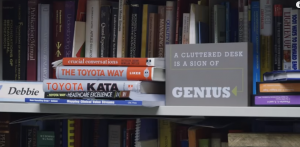If you listen to the news, you aren’t going to hear much on car crashes unless there has been a very bad one, or it is just a slow news day and they have nothing else to report. Plane crashes will be on the news whether it was a relatively minor incident, or a major one. This shows the two ways we can view a defect or a problem, either as a car crash, an inevitable incident that is bound to happen, or as a plane crash, a zero tolerance policy.
I recently watched a video that showed how these two different lines of thinking can have an enormous impact on someone’s life. This video was called “Do No Harm” by VOX on YouTube, and it outlines how treating an infection as a “car crash” or a “plane crash” can determine the life and death of patients in hospitals. During the video, an interview is conducted with the mother of a little girl named Nora, who had been born with an underdeveloped lung. Because of this defect, Nora had to have what is called a central line implant: a tube that is inserted into a vein that leads directly to the heart and is used for the speedy delivery of medicine and easy blood draws. An infection of this line can be very serious and extremely life-threatening. Nora had four of these infections. Because of these infections, she passed away just before her fourth birthday. Nora’s mother wrote a letter to the hospital where she was treated, outlining what she had seen and offered feedback. The hospital responded with a letter that stated “… We understand and recognize your feelings regarding Nora’s care and we apologize that you were dissatisfied with your experience…” This hospital treated central line infections like car crashes, an unavoidable risk, instead of something that could be prevented.
The second hospital shown in the video had a team of nurses who experienced many central line infections a few years back, and they decided to do something about it. They asked themselves if having zero infections was even possible, but one of the RNs at the hospital leading the project stated “You cannot accept good enough, you have to eliminate those [infections]…” The team used two books to aid them in their mission: “The Toyota Way” by Jeffery Liker and “Toyota Kata” by Mike Rother. With them, the hospital was able to adopt some aspects of Lean and Continuous Improvement, and together, the nurses developed practices that minimize the chance of exposure to something that can infect the central line. The team implemented a zero tolerance policy towards central line infections and this hospital went seven years without a single infection.
The video ends with the team going to talk to an expert on central lines and how to prevent infections in them. The expert stated that their first step in preventing infections was treating every infection as a defect, finding the root cause of the problem, and finding a way to prevent it from happening again.
Treating problems in this way is Lean Thinking, and this is a real-life example that shows the way we approach problems can have a real impact on the outcomes. Before, manufacturing had been the go-to example for implementing Lean, but this video is an amazing example of how Lean and Continuous Improvement can be implemented in all kinds of areas, and what the results can look like when it is.


Mitchell, this is a great post. Very educational but mostly I connected to it emotionally. Of course we should strive for zero defects. This is life and death stuff!!! The Toyota Way describes the thinking necessary to achieve this and Toyota Kata gives us the “secret sauce”….a way to work every day to achieve real results. Thanks for sharing.